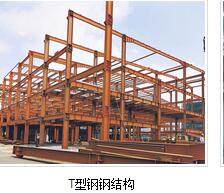产品推荐
RECOMMEND新闻推荐
NEWS RECOMMENDATION镀锌钢管的焊接特点及焊接工艺
发布时间:2020-11-16 来源:http://www.jnhxtcg.com/
镀锌钢管因为它有着耐腐蚀性能和使用寿命长的双重优点,并且镀锌管价格相应的也比较低廉,所以现在它的使用率也是越来越高了,但是的使用者在焊接镀锌管时并不注意,导致了一些不必要的麻烦,那么镀锌管在焊接时我们都应该注意些什么问题呢?那就让济南镀锌管的厂家小编来带大家了解一下
Galvanized steel pipe because it has the dual advantages of corrosion resistance and long service life, and the price of galvanized pipe is also relatively low, so now its utilization rate is higher and higher, but the users do not pay attention to the welding of galvanized pipe, resulting in some unnecessary trouble, so what problems should we pay attention to when welding galvanized pipe? Let Jinan Galvanized pipe manufacturers to take you to understand
济南镀锌钢管
Jinan galvanized steel pipe
一、前提就要打磨
1、 The premise must be polished
必须把焊接处的镀锌层打磨掉,否则会产生气泡、沙眼、假焊等。还会使焊缝变脆,刚性下降。
It is necessary to grind off the zinc coating at the welding position, otherwise bubbles, sand holes and false welding will be produced. It will also make the weld brittle and rigid.
二、镀锌钢的焊接特点
2、 Welding characteristics of galvanized steel
镀锌钢一般是在低碳钢外镀一层锌,镀锌层一般在20um厚。锌的熔点在419°C,沸点908°C左右。在焊接中,锌熔化成液体浮在熔池表面或在焊缝根部位置。锌在铁中具有较大固溶度,锌液体会沿晶界深入浸蚀焊缝金属,低熔点锌形成“液体金属脆化”。
Galvanized steel is generally coated with a layer of zinc on low carbon steel, and the zinc coating is generally in the thickness of 20um. The melting point of zinc is 419 ° C and the boiling point is about 908 ° C. In welding, zinc melts into liquid and floats on the surface of molten pool or at the root of weld. Zinc has a large solid solubility in iron, and liquid zinc can deeply etch the weld metal along the grain boundary, resulting in "liquid metal embrittlement" of low melting point zinc.

同时,锌与铁可形成金属间脆性化合物,这些脆性相使焊缝金属塑性降低,在拉应力作用下而产生裂纹。如果焊接角焊缝,尤其是T形接头的角焊缝容易产生穿透裂纹。镀锌钢焊接时,坡口表面及边缘处的锌层,在电弧热作用下,产生氧化、熔化、蒸发以至挥发出白色烟尘和蒸汽,极易引起焊缝气孔。由于氧化而形成的ZnO,其熔点较高,约1800°C以上,若在焊接过程中参数偏小,将引起ZnO夹渣,同时。由于Zn成为脱氧剂。产生FeO-MnO或FeO-MnO-SiO2低熔点氧化物夹渣。其次,由于锌的蒸发,挥发出大量的白色烟尘,对人体有刺激、伤害作用,因此,必须把焊接处的镀锌层打磨处理掉。
At the same time, zinc and iron can form intermetallic brittle compounds. These brittle phases reduce the plasticity of the weld metal and cause cracks under tensile stress. If the fillet weld is welded, especially the fillet weld of T-joint, it is easy to produce through crack. During the welding of galvanized steel, the zinc layer on the surface and edge of the groove will oxidize, melt, evaporate and even volatilize white smoke and steam under the action of arc heat, which will easily cause weld porosity. The melting point of ZnO formed by oxidation is higher than 1800 ° C. if the parameters are too small during welding, it will cause slag inclusion in ZnO. Because Zn becomes the deoxidizer. FeO MnO or feo-mno-sio2 low melting point oxide inclusions are produced. Secondly, due to the evaporation of zinc, a large amount of white smoke and dust will be emitted, which will stimulate and damage the human body. Therefore, the zinc coating on the welding joint must be polished off.
三、焊接工艺控制
3、 Welding process control
镀锌钢的焊前准备与一般的低碳钢是相同的,需要注意的是要认真处理好坡口尺寸和附近的镀锌层。为了焊透,坡口尺寸要适当,一般60~65°,要留有一定的间隙,一般为1.5~2.5mm;为了减少锌对焊缝的渗透,在焊之前,可将坡口内的镀锌层清除以后再焊。
The preparation before welding of galvanized steel is the same as that of ordinary low carbon steel. It is necessary to carefully handle the groove size and the nearby zinc coating. In order to weld through, the groove size should be appropriate, generally 60 ~ 65 ° and a certain gap should be reserved, generally 1.5 ~ 2.5mm; in order to reduce the penetration of zinc to the weld, the zinc coating in the groove can be removed before welding.
在实际工作中,采用了集中打坡口,不留钝边工艺进行集中控制,两层焊接工艺,减少了未焊透的可能性。焊条应根据镀锌刚管的基体材质选用,一般低碳钢由于考虑易操作性,选用J422较为普遍。焊接手法:在焊多层焊的层焊缝时,尽量使锌层熔化并使之汽化、蒸发而逸出焊缝,可大大减少液体锌留在焊缝中。
In the actual work, the centralized beveling process without blunt edge is adopted for centralized control, and the two-layer welding process reduces the possibility of incomplete penetration. Welding rod shall be selected according to the base material of galvanized steel pipe. J422 is generally used for low carbon steel due to easy operation. Welding method: when welding the first layer weld of multi-layer welding, try to make the zinc layer melt and make it vaporize and evaporate out of the weld, which can greatly reduce the liquid zinc remaining in the weld.
在焊角焊缝时,同样在层尽量使锌层熔化并使之汽化、蒸发而逸出焊缝,其方法是先将焊条端部向前移出约5~7mm左右,当使锌层熔化后再回到原来位置继续向前施焊。再横焊和立焊时,如选用短渣焊条如J427,咬边倾向会很小;如果采用前后往返运条技术,更可以得到无缺陷的焊接质量。
In the welding of fillet weld, the zinc layer shall be melted in the first layer as much as possible and vaporized and evaporated out of the weld. The method is to move the end of the welding rod forward about 5 ~ 7mm, and then return to the original position after melting the zinc layer and continue to weld forward. If short slag electrode such as J427 is selected for horizontal and vertical welding, undercut tendency will be very small; if back and forth rod transportation technology is adopted, the welding quality without defects can be obtained.
热门产品 / HOT PRODUCT